The Best Times to Visit Canada, According to Local Experts
Here's when to visit Canada, whether you want to ski, hike, see the northern lights, or spot wildlife.
With its thriving Indigenous experiences, exhilarating outdoor adventures, bustling urban hubs, and a prime location (it's one of only two nations bordering three distinct oceans), Canada is an exceptional four-season destination that warrants multiple visits.
"At Pan Pacific Whistler, we are privileged to have two properties in the heart of Whistler village, nestled between the mountains, which is the perfect location for exploring the area year-round," says Julie Lanteigne, general manager of both Pan Pacific Whistler Mountainside and Village Centre. "Steps from the hotel, guests can access the gondolas to Whistler Blackcomb’s alpine terrain, which is world-renowned for skiing and other winter sports, as well as hiking and mountain biking in the summer. In the spring and fall, our team enjoys hearing about the adventures guests experience at lower elevations, including visiting glacier-fed lakes, waterfalls, and golf courses, before returning to the hotels to relax in the heated outdoor pools or exploring the many incredible culinary options at our doorstep in the village."
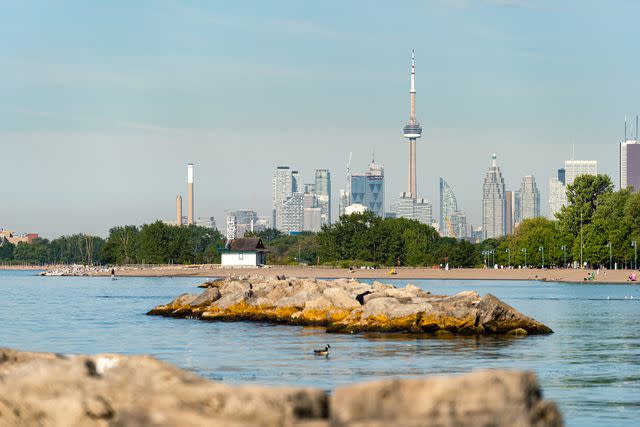
Scott Shymko/Getty Images
Depending on the type of adventures you’re seeking, the seasons can typically be described as such:
High Season: June to mid-September is best for hiking, biking, seeing wildlife, and exploring lakes.
Shoulder Seasons: April to May and mid-September to October are best for spring flowers and fall colors, respectively.
Low Season: November to March is best for skiing and winter adventures.
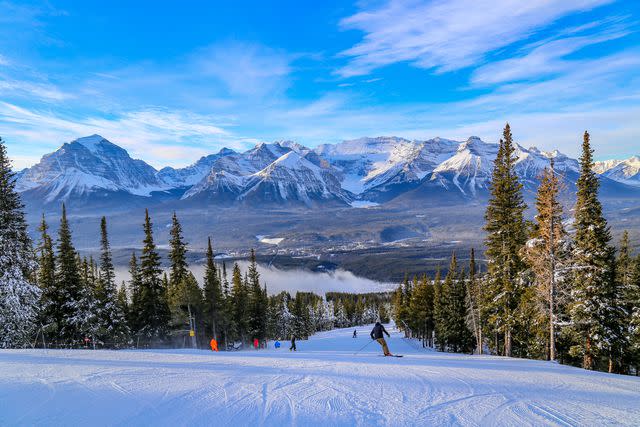
christiannafzger/Getty Images
Best Times to Visit Canada for Skiing and Winter Activities
While Canada's "low season" falls in the winter, the opposite can be said if you’re chasing knee-deep powder in the Alberta Rockies, British Columbia, or Quebec. "Out here, January and March are the optimal times for deep snow and sunshine on British Columbia's Powder Highway," says Matt Mosteller, senior vice president of Resorts of the Canadian Rockies. "Whether it’s in the bowls of Fernie Alpine Resort, the rocky chutes of Kicking Horse Mountain Resort, or the highest vertical terrain in North America at Revelstoke Mountain Resort, those are my favorite months to seek out fresh powder."
Away from traditional ski resorts, Canada can justifiably be considered the birthplace and reigning champion of heli-skiing thanks to industry pioneer Canadian Mountain Holidays (CMH), which runs numerous lodges across British Columbia. Out on the coast, award-winning Bella Coola Heli Sports holds a prominent presence in the majestic Coast Mountains, with several lodges and a new yacht-based heli-skiing experience. Beyond downhill skiing and snowboarding, December until March is best for ice fishing, snowshoeing, cross-country skiing, and winter festivals like SnowDays in Banff and Lake Louise, Carnival in Quebec City, and Festival du Voyageur in Winnipeg.
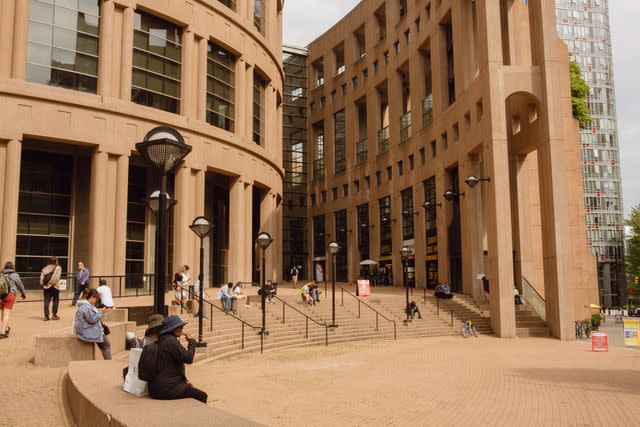
Rory Fuller/Travel + Leisure
Best Times to Visit Canada for Hiking
Canada completed the world's longest recreational, multiuse trail network in 2017. The 15,000-mile Trans Canada Trail joined an impressive portfolio of paths from coast to coast, most of which are best enjoyed in the summer. July and August are safe bets across the country for no snow and warmer temperatures, and spring (April-June) tends to have the most bugs and be the wettest. Consider hut-to-hut hiking via The Alpine Club of Canada or taking an Indigenous-led hike with Indigenous Tourism Alberta, Indigenous Tourism Quebec, or the many others across the country with Destination Indigenous.
Best Times to Visit Canada for Northern Lights Viewing
The mesmerizing northern lights, also known as aurora borealis, are best observed during winter nights. Although they can occasionally be seen across Canada, heading further north increases your chances of catching a glimpse. In the far north, the intriguing phenomenon of the midnight sun graces the summer months, while its counterpart — the polar night — dominates the winter as the sun barely rises above the horizon.
Because of this, ideal months for northern lights viewing tend to range from late fall to late winter. Their otherworldly luminous dance has significant Indigenous meaning, and to understand this and have a better chance at spotting them, book an Indigenous-led northern lights trip with a company like Who What Where Tours in the Yukon, Adventures Inuit in northern Quebec, or in Churchill, Manitoba, the polar bear viewing capital of the world. "There is more activity in the north and it's dark for longer periods of time," says David Daley from Wapusk Adventures. "As long as you have clear skies and darkness, we have aurora 300 nights a year here in Churchill. We have some awesome aurora mid-August till mid-September, when it gets dark again."
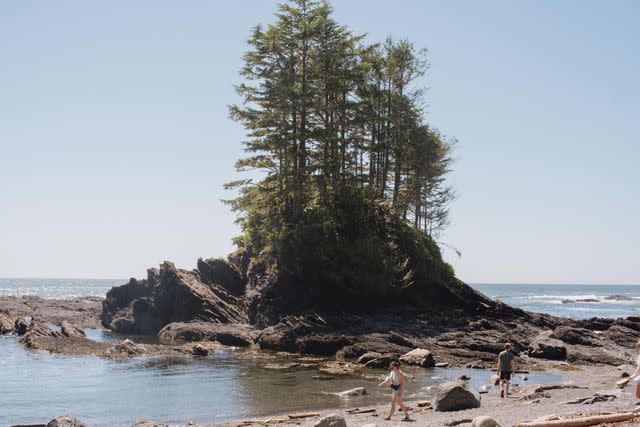
Rory Fuller/Getty Images
Best Times to Visit Canada to See Wildlife
With a shoreline lapped by the gentle waves of three distinct oceans and a varied topography that changes from one province to another, Canada is home to a rich array of wildlife. Whether in the Pacific, Arctic, or Atlantic oceans, the cetaceans, bears, and marine life are uniquely different in each environment, especially when the Arctic Ocean thaws come spring.
"The thrill of going on an expedition is never knowing what you’re going to find, but June through September in northern Canada [offers] pretty fantastic chances to spot some of Canada's most elusive and wonderful species," says Martin Aldrich, manager of key partnerships and strategic planning at Adventure Canada. "During this period, the region is at its most vibrant, coming to life with species like beluga whales, narwhals, bears, and Arctic foxes, all taking advantage of the long days and abundant food sources of the Arctic in summer.
He adds, "When I think of my own experiences with Arctic wildlife, an exhilarating summertime polar bear spotting immediately pops into my mind. A mother and cub were spotted on the sea ice just off the ship’s bow. They were cautious, but curious, and we all watched in awe as they navigated the ice flow, jumping between chunks to get closer to us. They moved close enough that I could see the warmth of their breath as they exhaled while perched on the frigid sea ice. Then, after a while, they gracefully slipped into the water and swam off. The spectacle of wildlife adds so much to the experience of travel in Canada, from the majesty of polar bears to the elusiveness of narwhals, it's what we're known for, and responsibly viewing wildlife on adventures through Canada is truly unforgettable."
South of the Arctic, a significant portion of Canada's wildlife relies on hibernation and/or migration for survival, making their appearances more predictable throughout the year, with the summer months often being the best time for viewing. On the western coast, these natural cycles play a crucial role in both the animals' lives and the likelihood of observing them. The salmon migration, occurring from late August to late October, is particularly noteworthy as these fish travel from the ocean to rivers for spawning.
This event attracts black and grizzly bears, who seize the opportunity to feast on salmon before retreating into winter hibernation. Found only in British Columbia’s Great Bear Rainforest, the Kermode bear (or spirit bear) is the rarest in the world and holds significance for coastal Indigenous communities. Although many believe the polar bear is the only white bear in the world, the Kermode is also a shade of white, but more closely related to the black bear. To maximize your chances of spotting a Kermode bear, consider booking a stay at the Spirit Bear Lodge or embarking on an expedition with Maple Leaf Adventures.
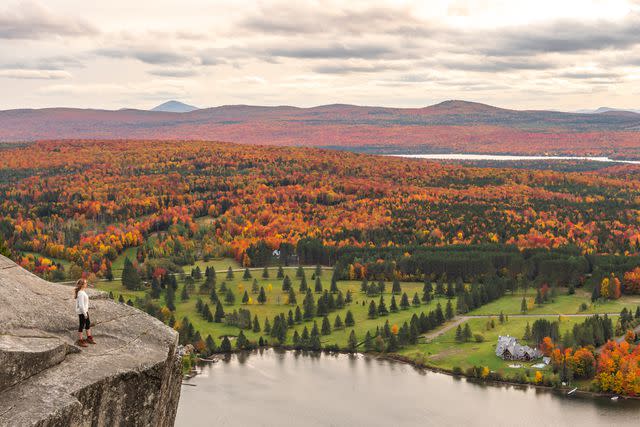
A&J Fotos/Getty Images
Best Times to Visit Canada for Foliage
Regarded as many Canadian’s favorite season, autumn is a celebration of bountiful harvests, the changing seasons, and vibrant foliage that reflects off the lakes and rivers. While the amber shades of fall can be found throughout Canada, there are some top places to enjoy it.
In the north, the mountains, and the prairies, fall is quick, sometimes lasting only three weeks. While the trees turn beautiful shades of gold in the Rockies, predicting their timing and planning a trip around this shift can be difficult.
For a more predictable display of fall colors, Ontario and Quebec are prime options, with the foliage lasting upwards of two months in September and October. Consider traveling on Via Rail from Quebec City to Montreal, as the train passes through trees adorned with golden hues.
For more Travel & Leisure news, make sure to sign up for our newsletter!
Read the original article on Travel & Leisure.

